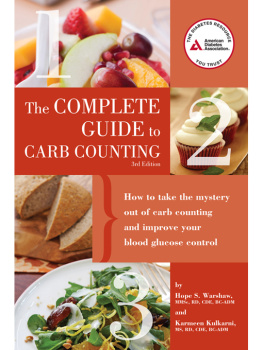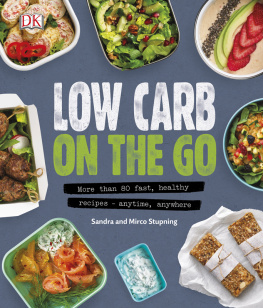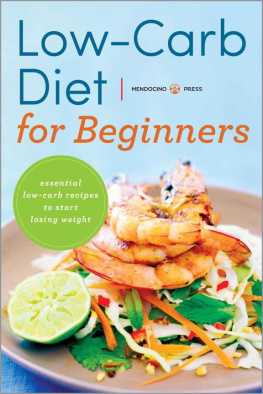
Director, Book Publishing, Abe Ogden; Acquisitions Editor, Victor Van Beuren; Editor, Greg Guthrie; Production Manager, Melissa Sprott; Composition, ADA; Cover Design, Vis--Vis Creative Concepts; Writer, Jennifer Arnold; Printer, Thomson-Shore, Inc.
2011 by Hope S. Warshaw and Karmeen Kulkarni. All Rights Reserved. No part of this publication may be reproduced or transmitted in any form or by any means, electronic or mechanical, including duplication, recording, or any information storage and retrieval system, without the prior written permission of the American Diabetes Association.
Printed in the United States of America
1 3 5 7 9 10 8 6 4 2
The suggestions and information contained in this publication are generally consistent with the Clinical Practice Recommendations and other policies of the American Diabetes Association, but they do not represent the policy or position of the Association or any of its boards or committees. Reasonable steps have been taken to ensure the accuracy of the information presented. However, the American Diabetes Association cannot ensure the safety or efficacy of any product or service described in this publication. Individuals are advised to consult a physician or other appropriate health care professional before undertaking any diet or exercise program or taking any medication referred to in this publication. Professionals must use and apply their own professional judgment, experience, and training and should not rely solely on the information contained in this publication before prescribing any diet, exercise, or medication. The American Diabetes Associationits officers, directors, employees, volunteers, and membersassumes no responsibility or liability for personal or other injury, loss, or damage that may result from the suggestions or information in this publication.
 The paper in this publication meets the requirements of the ANSI Standard Z39.48-1992 (permanence of paper).
The paper in this publication meets the requirements of the ANSI Standard Z39.48-1992 (permanence of paper).
ADA titles may be purchased for business or promotional use or for special sales. To purchase more than 50 copies of this book at a discount, or for custom editions of this book with your logo, contact the American Diabetes Association at the address below, at booksales@diabetes.org, or by calling 703-299-2046.
American Diabetes Association
1701 North Beauregard Street
Alexandria, Virginia 22311
DOI: 10.2337/ 9781580404365
Library of Congress Cataloging-in-Publication Data
Warshaw, Hope S., 1954
Complete guide to carb counting : how to take the mystery out of carb counting and improve your blood glucose control / Hope S. Warshaw, Karmeen Kulkarni. -- 3rd ed.
p. cm.
Includes bibliographical references and index.
ISBN 978-1-58040-436-5 (pbk.)
1. Diabetes--Diet therapy. 2. Food--Carbohydrate content. I. Kulkarni, Karmeen, 1953- II. Title.
RC662.W313 2011
616.4620654--dc22
2011000233
eISBN: 9781580403979
This book is dedicated to all people with diabetes.
We hope it provides you with the knowledge and skills to make carb counting a central part of your diabetes care
and helps you to achieve the diabetes control and quality of life that you desire.
Table of Contents
Foreword
Carbohydrates (or more precisely, lack thereof) have received a lot of attention over the last decade. It seems that with the recent popularity of low-carbohydrate diets on the market (diets, it should be noted, that have not been backed by serious scientific evidence), its nearly impossible to visit a grocery store, eat at a restaurant, or even open a newspaper without hearing about carbs. For those with diabetes, attention to carbohydrate is nothing new. Even before the discovery of insulin, early meal planning techniques focused on restricting carbohydrate intake. Over time, our understanding of carbohydrates improved. As the decades passed and research continued, it became clear that carbohydrates had the largest impact on blood glucose levels. Eventually, it was shown that not only sugar had this effect, but all carbohydrates. By the turn of the century, one of the main challenges of diabetes therapy was to match carbohydrate content to insulin availability (whether made by your body or injected from outside).
Just from a conceptual point of view, this notion seems easy enough to understand. However, as anyone who has ever tried to put this theory into practice appreciates, the process can be exceedingly difficult. Immediately a host of questions springs to mind: What is a carbohydrate? What foods contain carbohydrate? How much carbohydrate should a person eat? How do you count all of this carbohydrate? And perhaps ultimately, how does this help with diabetes management? Suddenly, what at first seemed like a simple matter of adding numbers can become overwhelming.
Fortunately, this is a good time to be a carb counter. There are a variety of resources available to help you in your pursuit of counting carbohydrates. Nutrition information detailing the amount of carbohydrate in foods is widely available, whether it is printed on the Nutrition Facts label on packaged food products, available in a menu at a restaurant, listed on a website, or catalogued in a carb count book. Many cookbooks, including all of those from the American Diabetes Association, list the nutrition information for their recipes. Scales and measuring devices, essential pieces of advanced carb counting, can be easily ordered from websites. In other words, the tools and aids available to you as a beginning carb counter are almost unlimited. Be sure to make these tools a part of your diabetes management. Recent studies have shown that the majority of people who count carbohydrate misestimate what they are actually eating. The reason for this, in my view, is not that the tools and aids are ineffective, but that they are not used effectively.
Furthermore, tools and aids can only do so much. They are not a method. Just because you have a hammer and saw doesnt mean you can build a house. To move forward you need a clear and cohesive blueprint. To build a strong carb counting program, think of this book as your blueprint. Within these pages, the internationally known authors provide a simple, easy-to-follow carb counting plan that can be tailored to any diabetes management regimen. They teach you how carbohydrate affects your blood glucose, how to use the tools available to you, why different sources of carbohydrate act differently in your body, and much more. They provide tips and tricks to make the process easier. And they present all of this information in a clear, easy-to-understand format that makes the process of learning as simple as possible.
Those who are new to carb counting often find that they have a lot of questions. However, all of these can be distilled down to two basic questions that form the foundation for the rest: Why should I count carbohydrates? And how do I count carbohydrates? The answers to both can be found in this book, which should be read by every physician, educator, and individual with diabetes. I teach our students that we never stop learning, no matter how much we think we know about a topic. It is for this reason that this most recent edition of Complete Guide to Carb Counting needs to be a part of every diabetes library, no matter if you are a health care professional or a person living with diabetes or both.
Irl B. Hirsch, MD
January 2011
Seattle, WA
Acknowledgments
We thank a number of colleagues who have provided valuable critiques on the three editions of Complete Guide to Carb Counting.
Next page















 The paper in this publication meets the requirements of the ANSI Standard Z39.48-1992 (permanence of paper).
The paper in this publication meets the requirements of the ANSI Standard Z39.48-1992 (permanence of paper).